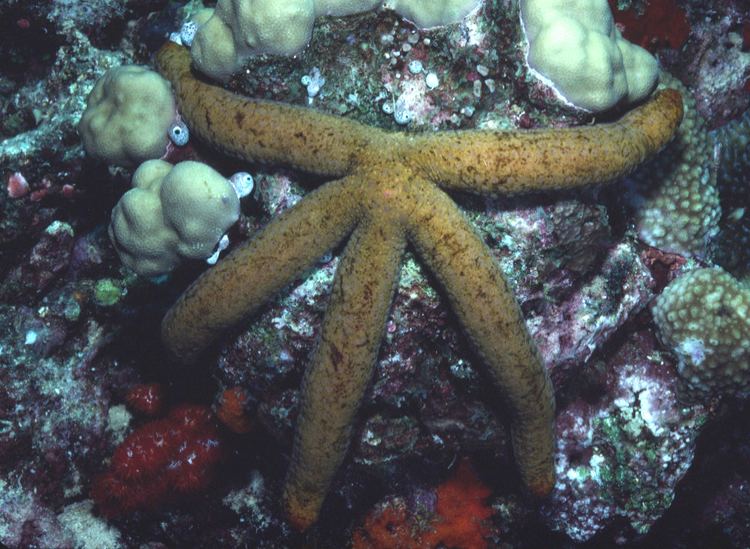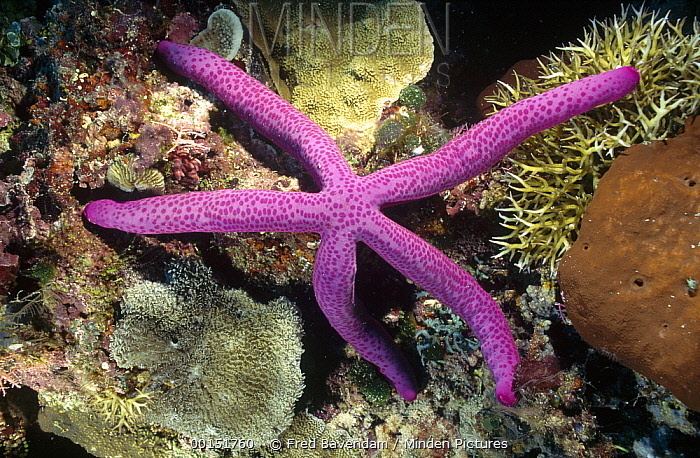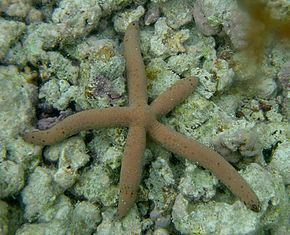Rank Species | Scientific name Linckia guildingi Higher classification Linckia | |
 | ||
Similar Linckia, Ophidiasteridae, Ophidiaster, Linckia multifora, Oreaster reticulatus | ||
Estrella mar cometa linckia guildingii common comet star
Linckia guildingi, also called the common comet star, Guilding's sea star or the green Linckia, is a species of sea star found in the shallow waters of the tropical Pacific Ocean, Indian Ocean, Atlantic Ocean and the Caribbean Sea.
Contents
- Estrella mar cometa linckia guildingii common comet star
- Valenciennea puellaris vs linckia guildingi
- Taxonomy
- Description
- Biology
- References
Valenciennea puellaris vs linckia guildingi
Taxonomy

Recent studies have indicated that Linckia guildingi may represent several cryptic species. Examination of the mtDNA showed that there are two clades within L. guildingi. The divergence between these implies that they separated over a million years ago.
Description

L. guildingi has a small disc and usually 5 (occasionally 4 or 6) long cylindrical arms. The upper surface appears smooth but is in fact rough to the touch with low, firm nodules. Though this starfish is often green, it comes in a range of colours including various shades of brown, blue and dull red.
Biology

L. guildingi sometimes exhibits autotomy, shedding one or more of its arms. In a study on Hawaii, it was found that autotomy happens less frequently than in the related species, Linckia multifora, also found in these waters. In time the arm will regenerate and in both species, the detached arms, known as "comets", are capable of moving about independently and themselves developing into new individuals, a form of asexual reproduction. The process is quite slow, it taking 6 months for the madreporite to appear. At 10 months it became functional and the new arms had reached 10mm (0.4 in) long as shown in the image above.
